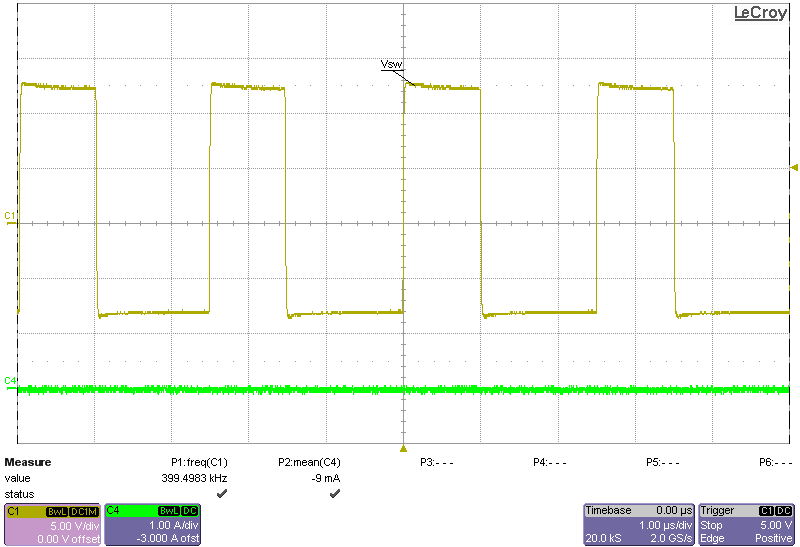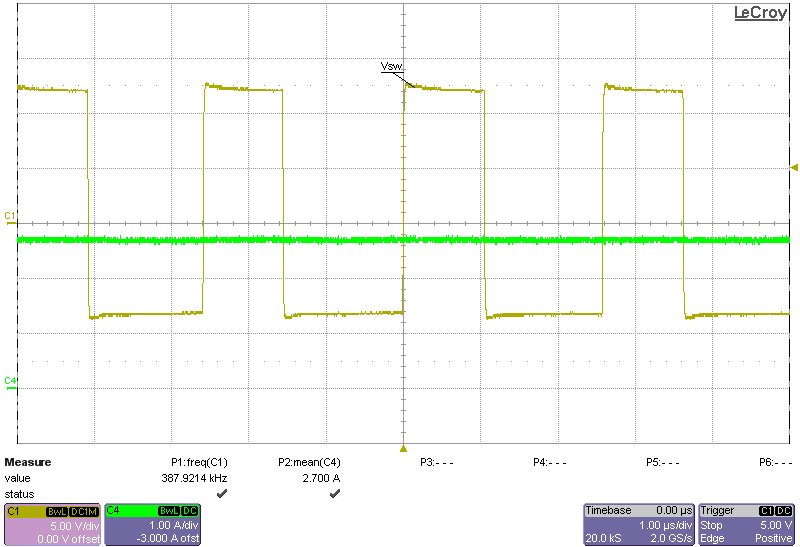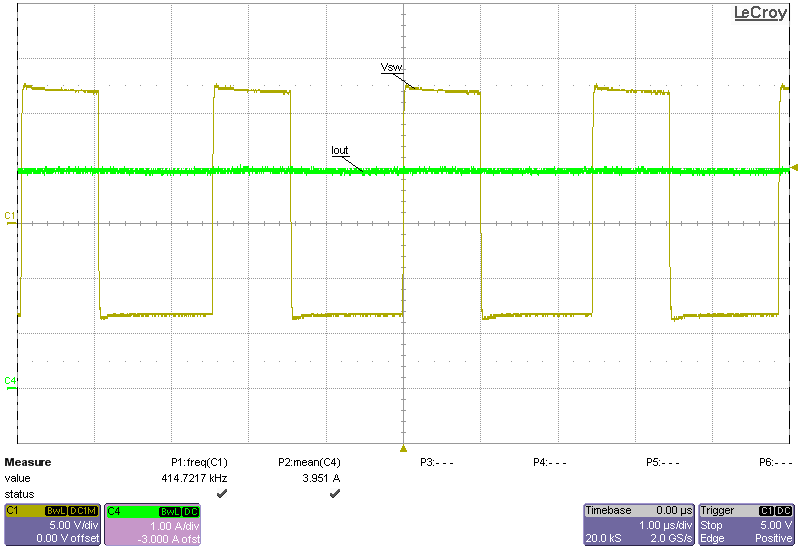TIDT324 February 2023
3.1 Switching
#FIG_Z3J_FHK_2MB to #FIG_D5S_5QM_JWB show the switch node voltage of the converter at 12-V input and –0.8-V output at no load, 2.7-A load, and 4-A load conditions.
 Figure 3-1 Switch Node Voltage, 12-V Input, –8-V Output, No
Load
Figure 3-1 Switch Node Voltage, 12-V Input, –8-V Output, No
Load Figure 3-2 Switch Node Voltage, 12-V Input, –8-V Output,
2.7-A Load
Figure 3-2 Switch Node Voltage, 12-V Input, –8-V Output,
2.7-A Load
Figure 3-3 Switch Node Voltage, 12-V Input, –8-V Output, 4-A Load